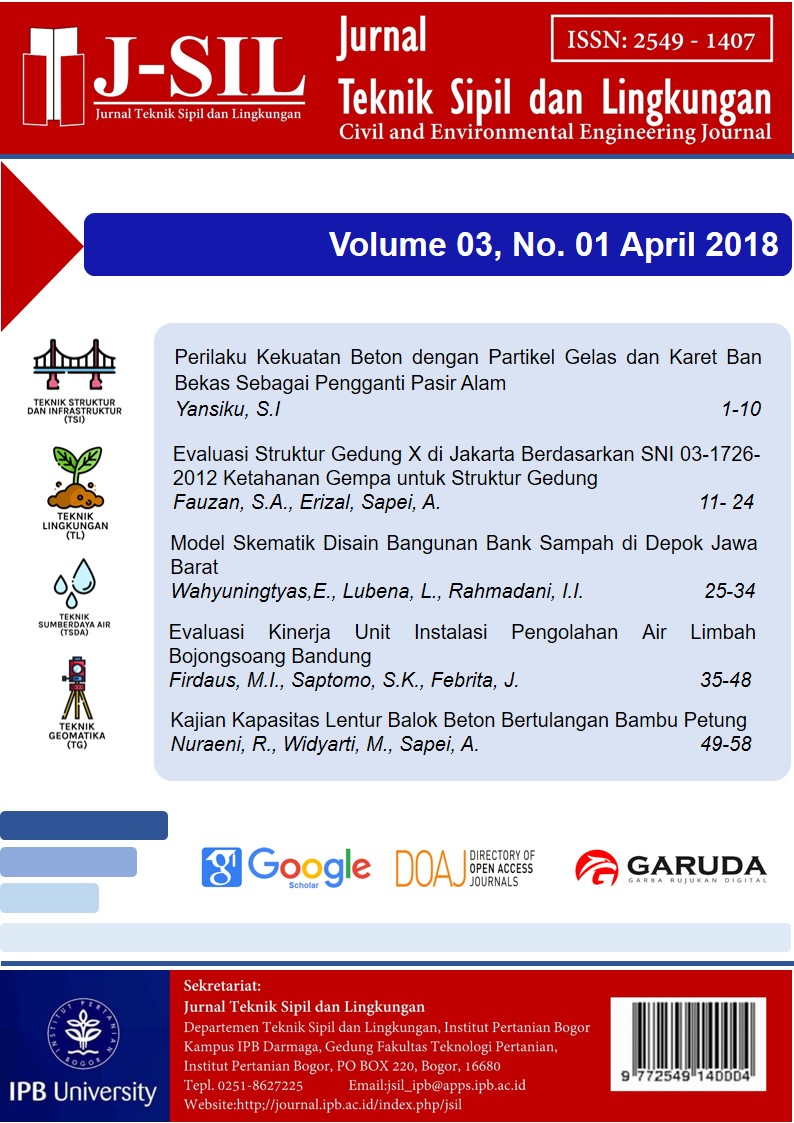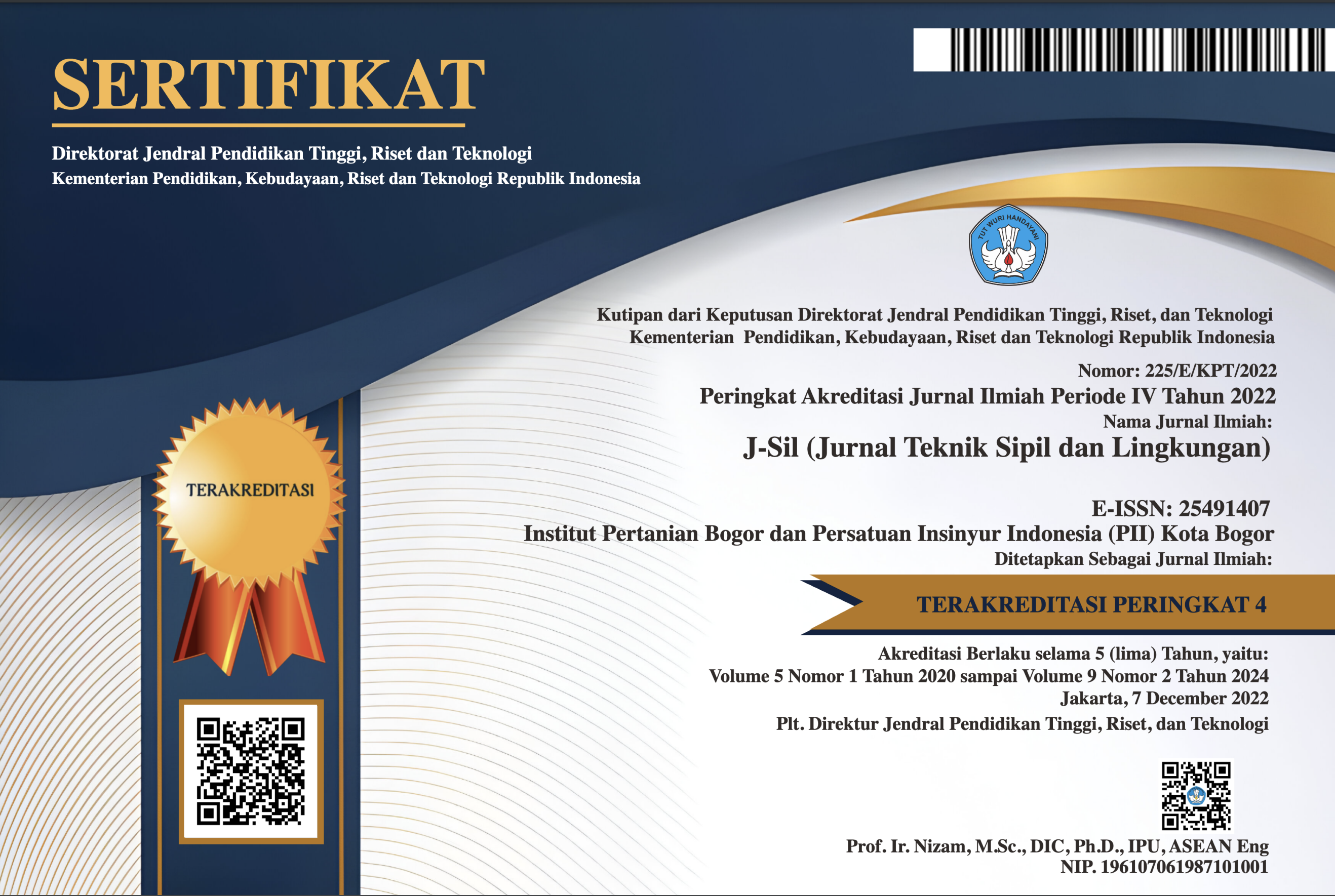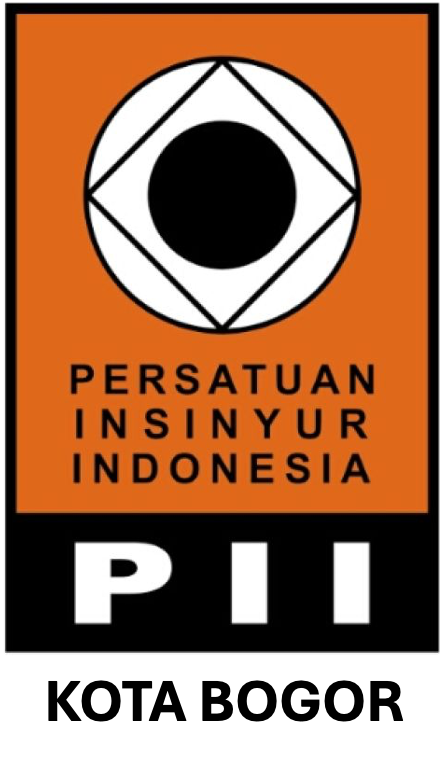Perilaku Kekuatan Beton dengan Partikel Gelas dan Karet Ban Bekas Sebagai Pengganti Pasir Alam
Abstract
This paper presents the results of experimental investigation into the behaviour of concrete mixed with recycled-based materials as partial replacement of natural sand. Various properties: compressive, split tensile and flexural strength were investigated through either single or combination replacement categories in which glass sand, rubber sand, and recycled concrete aggregate were specifically proportioned. Test results indicate that certain replacement types of possibly achieve sufficient strength and physical behaviour to replace normal concrete. Single replacements typically generate higher compressive, tensile and flexural strength than combination types. Concrete with lower content of alternative material exhibited comparable strength relative to the original concrete. The workability of higher angular surface material such as glass sand and rubber sand generated higher workability.
Keywords: concrete strength; glass; rubber; particles; replacement
Downloads
References
Ali EE, Al-Tersawy SH. 2012. Recycled Glass as a Partial Replacement for Fine Aggregate in Self Compacting Concrete. Construction and Building Materials. 35: 785-791.
Batayneh M, Marie I, Asi I. 2007. Use of Selected Waste Materials in Concrete Mixes. Waste Management. 27(12): 1870-1876.
Batayneh M, Marie I, Asi I. 2008. Promoting the Use of Crumb Rubber Concrete in Developing Countries. Waste Management. 28(11): 2171-2176.
Borhan TM. 2012. Properties of Glass Concrete Reinforced with Short Basalt Fibre. Materials & Design. 42: 265-271.
Bravo M, Brito JD. 2012. Concrete Made with Used Tyre Aggregate: Durability-related Performance. Journal of Cleaner Production. 25: 42-50.
Ismail ZZ, Al-Hashmi EA. 2009. Recycling of Waste Glass as a Partial Replacement for Fine Aggregate in Concrete. Waste Management. 29(2): 655-659.
Kou SC, Poon CS. 2009. Properties of Self-compacting Concrete Prepared with Recycled Glass Aggregate. Cement and Concrete Composites. 31(2): 107-113.
Limbachiya MC. 2009. Bulk Engineering and Durability Properties of Washed Glass Sand Concrete. Construction and Building Materials. 23(2): 1078-1083.
Ling TC, Poon CS. 2011. Utilization of Recycled Glass Derived from Cathode Ray Tube Glass as Fine Aggregate in Cement Mortar. Journal of Hazardous Materials. 192(2): 451-456.
Malik MI et al. 2013. Study of Concrete Involving Use of Waste Glass as Partial Replacement of Fine Aggregates. IOSR Journal of Engineering. 3(7): 8-13.
Nithiya P, Portchejian G. 2014. Behaviour of Partial Replacement of Fine Aggregate with Crumb Rubber Concrete. International Journal of Structural and Civil Engineering Research. 3: 63-72.
Oliver JGJ, Maenhout GJ, Muntean M. 2014. Trends in Global CO2 Emissions: 2014 Report.
Segre N, Joekes I. 2000. Use of Tire Rubber Particles as Addition to Cement Paste. Cement and Concrete Research. 30(9): 1421-1425.
Shayan A, Xu A. 2004. Value-added Utilisation of Waste Glass in Concrete. Cement and Concrete Research. 34(1): 81-89.
Shayan A, Xu A. 2006. Performance of Glass Powder as a Pozzolanic Material in Concrete: A Field Trial on Concrete Slabs. Cement and Concrete Research. 36(3): 457-468.
Siddique R, Naik TR. 2004. Properties of Concrete Containing Scrap-tire Rubber – An Overview. Waste Management. 24(6): 563-569.
Taha B, Nounu G. 2008. Properties of Concrete Contains Mixed Colour Waste Recycled Glass as Sand and Cement Replacement. Construction and Building Materials. 22(5): 713-720.
Thomas BS et al. 2014. Strength, Abrasion and Permeation Characteristics of Cement Concrete Containing Discarded Rubber Fine Aggregates. Construction and Building Materials. 59: 204-212.
Vu DC, Turatsinze A, Ho AC. 2008. On the Potential of Rubber Aggregates Obtained by Grinding End-of-life Tyres to Improve the Strain Capacity of Concrete. Concrete Repair, Rehabilitation and Retrofitting II. CRC Press. 95-96.
Warudkar AA, Valekar NS. 2015. A Technical and Economical Assessment of Replacement of Coarse Aggregate By Waste Tyre Rubber in Construction. International Journal of Engineering Research and General Science. 3:754-766.
Yung WH, Yung LC, Hua LH. 2013. A Study of the Durability Properties of Waste Tire Rubber Applied to Self-compacting Concrete. Construction and Building Materials. 41: 665-672.
Authors who publish with Jurnal Teknik Sipil dan Lingkungan, JSIL agree to the following terms:
a. Authors retain copyright and grant the journal right of first publication with the work simultaneously licensed under a Creative Commons Attribution License that allows others to share the work with an acknowledgment of the work's authorship and initial publication in this journal.
b. Authors are able to enter into separate, additional contractual arrangements for the non-exclusive distribution of the journal's published version of the work (e.g., post it to an institutional repository or publish it in a book), with an acknowledgment of its initial publication in this journal.
c. Authors are permitted and encouraged to post their work online (e.g., in institutional repositories or on their website) prior to and during the submission process, as it can lead to productive exchanges, as well as earlier and greater citation of published work (See The Effect of Open Access).











